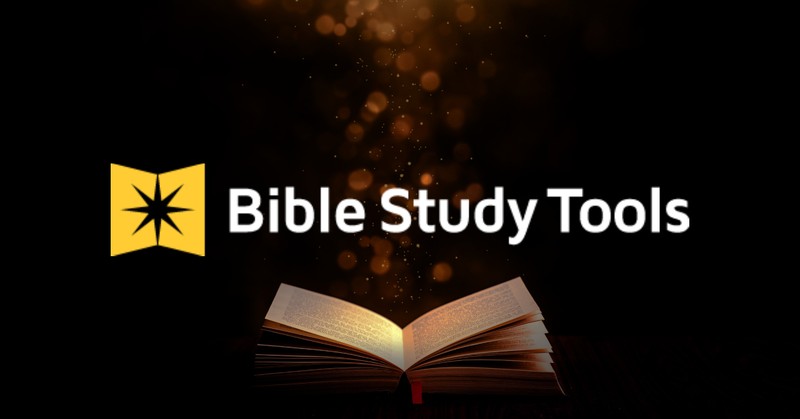How Should We Read and Interpret Revelation?
Share

The Book of Revelation can be intimidating. How we read and interpret Revelation is key to avoiding feeling overwhelmed.
The Apostle John’s writing is packed with biblical symbolism, and an element of mystery is inherent in this final book of the Bible. But, instead of being daunted by the wild (and frankly, sometimes frightening) imagery, we can employ several simple tools to assist our study.
First, we’ll review three basic principles for all Bible study. Second, we’ll look at the overall structure of Revelation. And third, we’ll look at the various schools of interpretation. This framework can be a helpful strategy for decoding some of Revelation’s apocalyptic puzzles.
Knowing the various methods used to interpret Revelation, like different lenses to view it, also helps us understand how (and why) we may disagree with another person’s understanding. It will help us explain our perspective.
Everyday Christians should be able to read Revelation without fear, even without understanding every single symbol or image. One powerful truth should comfort us: we will see Jesus in Revelation. Where Jesus is, we are safe to go.
Why Is It important to Read Revelation If It’s So Hard to Understand?
It’s common to be apprehensive about reading Revelation, but it’s a mistake to avoid it altogether. We know from Revelation 1:1 that it is “The revelation of Jesus Christ.” What is revealed about Jesus in this book is a different perspective of Him than the one we receive in the gospels. We must know all we can know about our Lord.
We are well-served if we approach Revelation with humility and faith that the Holy Spirit can guide us through this book just as He has the other sixty-five. God, in His mercy, knew we would be tempted to ignore Revelation, so He attached a blessing and a warning that the time is near.
Revelation 1:3 reads, “Blessed is the one who reads aloud the words of this prophecy, and blessed are those who hear, and who keep what is written in it, for the time is near.” God’s concept of timing is vastly different than ours, but we do well to see this blessing as an indication that we should read Revelation at least once. We may not understand it all, but we should try to understand what we can, each of us to our own ability.
Here are some keys and tools to making reading and interpreting Revelation more approachable.

Three Key Principles for All Bible Study
It is good when approaching Revelation to remember these three basic principles of all Bible study. I’ve included the Latin terms for those who enjoy Latin, but you don’t have to pronounce it to understand each concept:
1. Scripture interprets Scripture (Scriptura sui interpres): This principle is particularly important when studying Revelation. The code to Revelation’s symbolism is often found in all the books that came before it. This should give you hope and a tool.
That doesn’t mean you have to read the entire Bible before understanding it, although the more you read the other sixty-five books, the better.
When we encounter symbolic language in Revelation, we can research where else in Scripture that imagery appears. For instance, in Revelation 1:7, John mentions, “he is coming with the clouds.” We’ve seen that wording before in 1 Thessalonians 4:17. How might they be related?
Then, in Revelation 1:12-16, John describes one “as a Son of Man” and writes a description similar to Daniel’s vision in Daniel 10:4-9. Comparing these passages can provide insight, and since they were written centuries apart, they validate the visions of each writer as credible. Jesus also kindly explains some of the symbolism of verse 16 just a few verses later in verse 20.
So, if we’ve read and studied much of the Bible, we should be comfortable noticing similar images. If we’re new to reading the Bible, it can be helpful to ask someone more familiar with it or use a concordance to research other places specific symbols appeared.
2. Context is king. It’s important when reading any book of the Bible to understand the type of literature in which that book is written and the context of any given verse or image.
There are books of law, history, poetry, wisdom, prophecy, gospel, and letters. Solomon wrote proverbs. Jesus spoke in parables. Revelation is prophecy, specifically apocalyptic, meaning “having to do with the end.”
Know the context of the section of Revelation you’re reading, and then remember the Latin phrase “sensus literalis.” This means trying to understand something in its most literal sense first. Don’t assume something is symbolic imagery unless that’s the only logical explanation.
For example, in Revelation 1:7, we can appreciate that John is saying Jesus will literally come “in the clouds” because the context of his greeting references historical happenings, and we know from Acts 1:9-11 that Jesus ascended before many witnesses into a cloud. However, in 1:12-16, we understand that John uses poetic language to describe what he sees so that we can imagine it.
3. Consider the Bible’s overall teaching. When wrestling with a particular verse or passage, remember the overall teaching of Scripture and maintain that as the context for understanding each smaller section.
For instance, in Revelation 2:7, we find this passage “To the one who conquers I will grant to eat of the tree of life, which is in the paradise of God.” Taken out of context, someone might imagine that applies to world conquerors or military leaders. We know from Romans 8 and from later passages in Revelation that we are conquerors in Christ. Knowing Him is the way to conquer that leads to entering God’s paradise.

What Are the Major Sections of Revelation?
Revelation can be studied in sections to help us better “eat the elephant” of this book, one bite at a time.
Revelation 1-3 introduces the book and includes messages to seven churches. Some see these as seven literal churches of that time. Others view them as different ages of the church throughout time. Still, others believe each church can be like one of these seven churches. We can all learn what Jesus wants from the lives of Christians by reading in these letters behaviors and attitudes He honors and those He condemns.
Revelation 4-18 opens a door on Heaven. We get a glimpse of God on His throne. Then we see Jesus, the Lamb of God, opening each of seven seals that unleash the four horsemen of the Apocalypse and various trials on earth. This is followed by angels blowing seven trumpets that unleash ever-increasing trials on earth. There is more, including glimpses of the 144,000, the multitude worshipping in Heaven, scrolls, beasts, a dragon, two witnesses, the Lamb, seven plagues, seven bowls of God’s wrath, and the “fall of Babylon.” Essentially, we witness actions taken in Heaven that impact those left on earth (as well as Satan). Even if we don’t understand every portion of what we read, Revelation helps increase our faith. It reminds us that what we do on earth matters in Heaven, and there will come a time when God brings all that has been prophesied to fulfillment.
Revelation 19-22 prophesies the triumphant return of Jesus, the end of Satan and death, the judgment of the living and the dead, and the new Heaven and Earth. Especially during times of great trial, having this view of Jesus and knowing that sin, Satan, and death will end can fortify us to endure. Looking forward to when God makes all things new produces perseverance and hope.
How Have Christians Interpreted Revelation in the Past?
Traditionally, there are four “lenses” through which Christians have interpreted the Book of Revelation. They are:
1. The Historicist View: Those who read Revelation from this interpretation view it as a panorama of church history from the first century to the second coming of Christ written with prophetic language. The further we progress in time, the more times Revelation must be re-interpreted using this method.
2. The Preterist View. Preterist is another word that comes from Latin and essentially means “what is past.” This view is like the historicist view, except it proposes that Revelation ended with the fall of Jerusalem in 70 A.D. Preterists believe all but the final four chapters were fulfilled at that time. Those living in John’s day would likely have read it this way as they anticipated Jesus’ imminent return. They were certainly undergoing great persecution.
3. The Idealist View. Idealists regard Revelation solely as a book explaining the greater ongoing battle between good and evil in the world. They don’t take any of it as a literal description of events that have happened or are to happen but largely allegorize the entirety.
4. The Futurist View. Futurists view Revelation as a prophetic book written in the apocalyptic style using symbolic language to discuss what will happen in Heaven and on earth just before the final judgment and God’s restoration, where He makes all things new.

Which View Should We Take of Revelation?
An eclectic approach can assist us in reading Revelation. The preterist view helps us understand how the early church would have applied John’s writings. A idealist view helps us appreciate that the greater struggle of good vs. evil has played out throughout time. Revelation gives an overarching view of that struggle. However, it’s hard to ignore that certain elements of this book have clearly not taken place and would benefit from a futurist perspective.
We should also remember to ask questions. Sometimes we miss out on understanding Revelation, not because of the text, but because of theological terms others use when teaching it or studying it with us. Terms like rapture, millennialism, or dispensationalism can be daunting, but they’re simply words that describe perspectives on when Jesus will return or if Christians literally reign with Jesus for 1000 years. Ask people to clarify the terms they use. Use a Bible dictionary. Speak with your pastor or ministry leader. Don’t let unfamiliar terms interfere with reading this important book.
What Lessons Can We Learn from Revelation Today?
Many are under the impression that everything we believe about the “end times” comes from the Book of Revelation. There is actually much teaching about what lies ahead from Jesus, Paul, Peter, and even the Old Testament prophets. Revelation adds to our understanding of the end. Still, if we’re trying to develop a fuller appreciation of what is to come, we benefit from a broader study that includes Revelation plus these other portions of Scripture.
One of our primary motivations for reading and studying Revelation should be to broaden our understanding of Jesus and His work on the cross and in His resurrection. There is a perspective of who Jesus is uniquely revealed in this book: “The Revelation of Jesus Christ.”
Our love of Jesus compels us to know Him completely. Revelation shows us Jesus at work in ways we don’t see fully in the gospels. We glimpse Him in Heaven and see the outcome of His victory over Satan and death.
Having as full a picture of Jesus as He desires us to have better equips us for the trials and tests of our times and those to come. It strengthens faith and fortifies hope.
What are you waiting for? Put Revelation in your reading plan for the year to come.
Photo credit: ©SparrowStock
This article is part of our larger End Times Resource Library. Learn more about the rapture, the anti-christ, bible prophecy and the tribulation with articles that explain Biblical truths. You do not need to fear or worry about the future!
Seven Churches of Revelation
Antichrist
Seven Trumpets
New Heaven and New Earth
Who Are the 144,000?
